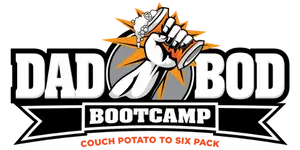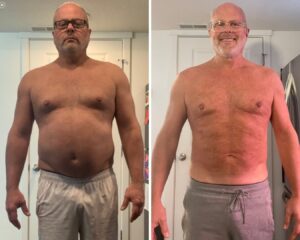Unless you’ve been living in a cave for the last twenty years, you’ve probably heard a thing or two about the paleo diet. It’s attracted athletes and celebrities alike. Both Kobe Bryant and Uma Thurman sing the diet’s praises as providing them with all the energy they need and keeping them in the best shape of their lives.
So, what is it about the paleo diet that draws so many health-conscious individuals to it? In this article, we’re going to take a look at everything you need to know about the paleo diet and how it could be the best remedy for your “dadbod”.
What Is the Paleo Diet?
The paleo diet is also referred to as ‘the caveman diet’. In short, it involves following a paleolithic diet similar to how hunter-gatherers would have eaten in the early stages of the Stone Age.
For those of you not so familiar with human history, paleolithic hunger-gatherers would have eaten anything they could hunt, and whatever they could find on their foraging travels. As you can probably imagine, there were no freezers packed full of pizzas and ice cream.
The human diet changed dramatically when farming was introduced around 10,000 years ago. Farming introduced the human race to dairy, grains legumes, and refined sugars.
Preachers of the paleo gospel claim that these types of food are a mismatch for the genetics of the human body, and that they’re the main reason we have so many health problems such as cardiovascular disease and diabetes in today’s society.
Instead, the paleolithic diet sticks to lean meats, fruits, vegetables, nuts, and seeds. Everything you could get your hands on if you were living in a cave.
Is the Paleo Diet Good for You?
Naturally, before you uptake a dietary upheaval, you probably want to know whether or not it’s good for you.
One of the big ideas behind the paleo diet that gets batted around a lot is that the human body is a wonderful machine. It is capable of overcoming almost anything providing we don’t keep throwing spanners in the works.
Unfortunately, modern living offers us plenty of spanners. Alcohol, cigarettes, processed food, poor sleep, and an increasing prevalence of sedentary lifestyles. This isn’t what the human body is designed to be dealing with.
As a result, the body is busy fighting all this bad stuff, so it doesn’t have the breathing ground it needs to tackle the stuff that causes us the biggest health problems.
The paleo diet removes all the unnecessary garbage from our diet. This means the body isn’t busy processing complex carbohydrates in an attempt to get energy. It’s not trying to filter out toxins from processed foods.
As we’re about to see, the paleo diet still leaves room for a wide array of food. There’s no shortage of ingredients to make up a tasty meal. The one thing it does is guarantees that you’re getting exactly what your body needs.
Taking up a paleo diet will help raise your natural energy levels, clear the brain fog and help instill a better overall state of well-being. It’s not a crash diet, and you’re not starving yourself. Think of the paleo diet as a healthy and wholesome new approach to eating what you should have been eating all along.
What Do You Eat on the Paleo Diet?
One of the things that makes the paleo diet successful is the variety of the things you can eat. Sure, at first it might sound a little daunting. But, that’s just because we’re used to the convenience of pre-packaged food.
When you take a closer look at these foods you’ll find that there are a lot of things added that don’t benefit the human body (we’ll take a closer look at that later). After the initial shock of the absence of chips and cookies, you’ll quickly realize that you’re not short of options when you’re on the paleo diet.
The number one rule when it comes to what you can eat on the paleo diet is that it should be natural. Let’s take a closer look at what’s going to be on your plate.
Paleo Meat & Seafood
Lean meat and seafood are the best sources of protein, and fortunately, they’re encouraged with the paleo diet. The only thing you need to be careful about is where the meat is from. Unfortunately, many of the factory processed animal products are grain-fed as well as being pumped full of various toxins in an attempt to make them grow bigger and quicker.
When sourcing your meat products, it’s important to choose grass-fed, all-natural meats. Grain-fed factory-farmed animals tend to be less lean than grass-fed animals. This means more saturated and trans fats, which are linked to an increased chance of heart disease.
Grass-fed animals, on the other hand, contain more of the Omega-3 fatty acids that help to reduce inflammation in the body.
When it comes to seafood, you should be looking for wild fish as supposed to be farm-caught. Again, this helps guarantee the presence of Omega-3 fatty acids.
Think of it like this… If you were a hunter-gatherer, the meats you ate would be coming from their natural habitat and the animal’s diet would be entirely natural, too. The paleo diet is all about eating food as close to its natural source as possible.
Eggs
Eggs are an excellent source of protein, antioxidants, minerals, and B vitamins. They’re a welcome addition to the paleo diet because they’re pretty damn versatile and easy to prepare. Always opt for free-range and organic eggs as supposed to eggs from caged hens.
Vegetables & Fruit
Vegetables and fruit are often debated in the Paleo community. This is because there are several fruits, such as bananas and mangoes that are high in sugar. Some vegetables, such as potatoes are high in starch, which is a complex carbohydrate and therefore needs to be broken down into sugar before they are used for energy.
The paleo diet should consist of unprocessed, whole foods, so vegetables and fruit should make up the bulk of your caloric intake. Some examples of the best vegetables and fruits to eat on the paleo diet include:
- Broccoli
- Cauliflower
- Sweet potatoes
- Butternut squash
- Spinach
- Cabbage
- Apples
- Berries
- Melon
- Citrus fruits
- Peaches
As you can see, between fruits, vegetables, meat, and seafood, it’s not difficult to start building a paleo-friendly healthy eating plan.
Nuts & Seeds
As a hunter-gatherer, you’d be busy eating a lot of nuts and seeds to keep you going on your hunting outings. Nuts are a great source of protein, healthy fats, and fiber. They also make a great snack to have throughout the day.
You can eat any nut, other than peanuts, as they are technically classed as legumes. So stock up on almonds, walnuts, cashews, and pistachios.
Healthy Oils
Oils are a tricky one because several vegetable and nut oils are heavily processed. When choosing oil it’s important to opt for those that have come directly from the plant. Olive oil, nut oils, avocado, and coconut oil are all allowed on the paleo diet.
What Foods Can You Not Eat in the Paleo Diet?
With so many foods available to you on the paleo diet, it might be easier to have a good idea of what you can’t eat.
It’s pretty simple, you need to avoid any food that has been processed and had things added to it. These include:
- Legumes (peanuts, lentils, tofu, beans)
- Refined sugar
- Salt
- Dairy
- Soda and sweetened beverages
- Alcohol
- Cereal grains
- Processed foods
- Refined vegetable oils
- Artificial sweeteners
All of these foods are man-made and a product of modern agriculture. Dairy is a tricky one because you can argue its health benefits, however, cavemen didn’t milk cows! If you’re looking for a dairy kick in your diet then try nut-based alternatives such as almond or coconut milk.
Get Rid of Your Dad Bod With the Paleo Diet
That thing sitting just below your man boobs. Yeah, the thing that hangs a little over the waistband of your trousers. We call it a ‘gut’. That’s a sign that you have too much fat. It’s the leading indicator that you have a dad bod.
One reason you have too much fat could be because you simply consume more calories than you burn off, and for that the cure is exercise. However, a lot of the foods that you eliminate by following the paleo diet are either high in sugar or broken down into sugar before they’re used by the body.
The problem is that the body can only use so much sugar, and the rest has to go somewhere else. Well, guess what, the body converts it into fat. The caveman diet could well be your secret weapon in your fight against the dad bod.
If you’re sick and tired of seeing that gut in the mirror, then contact us now at Dad Bod Bootcamp so you can start making the most out of a wholesome and rewarding “non-dadbod” life.






0 Comments